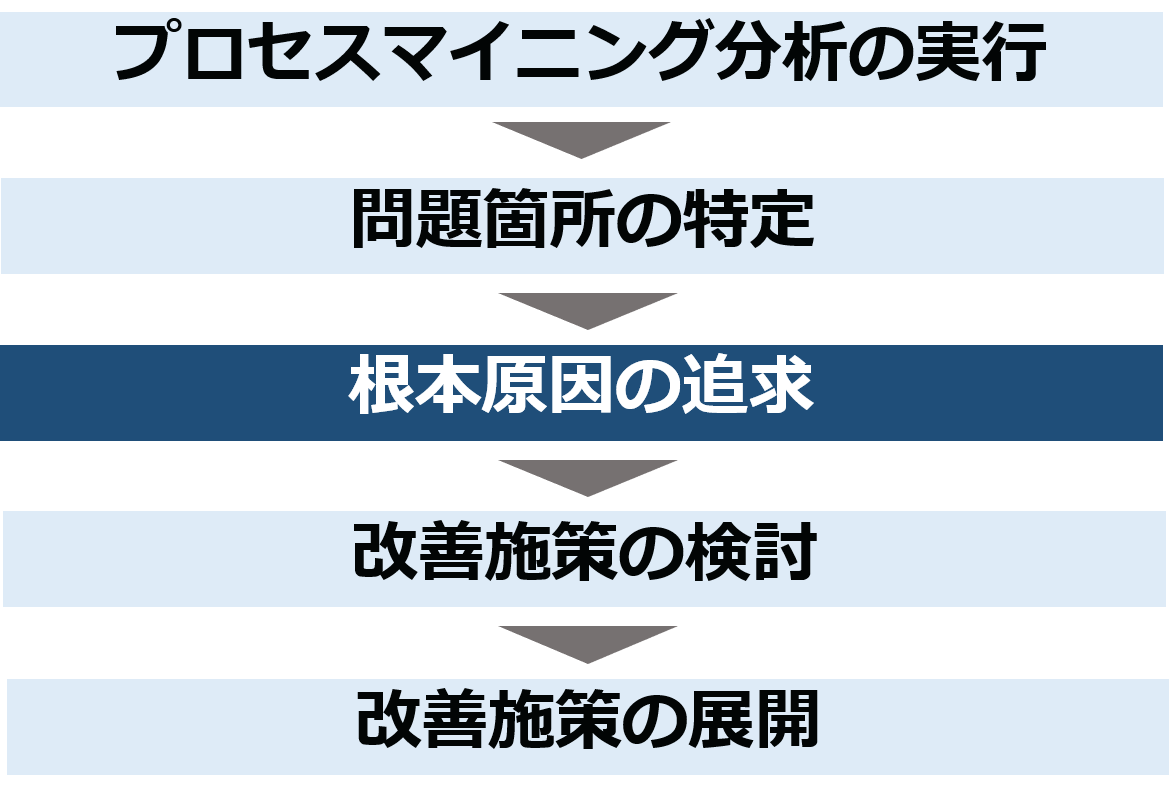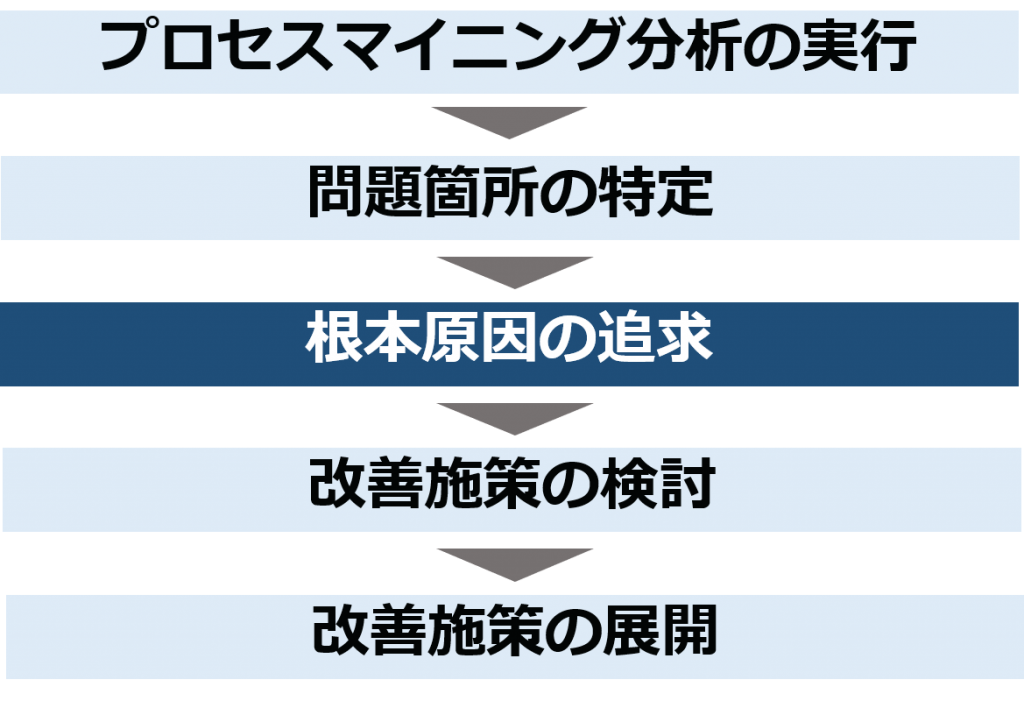Hidden truth of process mining(2)
English follows Japanese. Before proofread.
新しいITツールが登場したとき、何でも解決する万能ツールであるかのような幻想を抱く方がいらっしゃいます。
当然ながら、万能ツールは存在しませんし、そもそも、単なる道具ですから、ユーザーの使いこなしのスキルのほうがより重要なわけです。切れ味が最高に素晴らしい包丁があったとしても、包丁の扱いに慣れていなければ、食材をうまく調理できないのはおわかりになると思います。
プロセスマイニングツールも、もちろん万能ではなく単なる分析ツールです。そして極めて大事なことは、分析結果の中に「どうすればよいか」という解決策はないということです。それどころか、「なぜこんなに非効率なのか」、「なぜボトルネックが発生しているのか」という原因も、分析結果からはわかりません。
プロセスマイニングツールに限らず、BIなどの分析ツールによって発見できるのは、「問題の所在」にすぎません。イベントログから描き出されたフロー図、すなわち「as isプロセスモデル」を様々な切り口から分析することで、業務手順のどこに問題が所在するのか、容易に特定することはできます。
しかし、なぜ、そこで問題が発生しているのか、は分析結果は教えてくれないのです。問題の所在を深堀りすることで、問題を発生させている要因を絞り込んでいくことはできます。
たとえば、受注プロセス(O2C)において、受注から納期までのスループット(全体リードタイム)が期待よりも長すぎるという事実を把握し、それは「問題である」と評価したとします。そこで、プロセスマイニングツールを使って、さらに製品別、顧客別などで分析していくことで、どの製品を受注した場合に、あるいはどの顧客の場合に納期が長くなりがちなのか、といったことを突き止めることは可能です。
これは大変有益な情報ではありますが、依然として「なぜ、そうなのか」はわからないのです。「なぜ(Why)」を明らかにしたければ、いや、Whyを追及しなければ、有効な解決策は導けないのですが、現場担当者にヒアリングしたり、観察調査したりする必要があります。
プロセスマイニングを行う究極の目的は分析を行うことではなく、業務プロセスの改善やデジタルトランスフォーメーション(DX)の推進といった経営課題の解決のためでしょう。
ただ、分析手法としてのプロセスマイニングの直接的な目的は、「根本原因の解明」にあります。分析を実行し、問題個所を特定できたからといってすぐに改善施策を考えてはいけません。
たとえば、あるプロセスがやたら時間がかかりすぎている、つまり非効率だという問題が発見できたとします。じゃあ、RPAを導入して自動化すれば効率的になるよね、と安易な改善施策に飛びつく方がいらっしゃるのではないでしょうか。
そもそも、なんでそんなに時間がかかっているのか、現場担当者に聞いてみたら、RPA以前に、予定な手順を省くことで簡単に時間が短縮できた、ということがありえます。
ですから、分析ツールが答えを教えてくれる、という幻想を捨て、分析結果を得たあとは、現場に立ち戻り、泥臭く根本原因の解明に取り組まなければならないのです。根本原因がわかってこそ、対処療法ではない、有効な改善施策の立案が可能となります。
楽しておいしい果実は手に入りません。
As new IT tools emerge, some people have the illusion that they are a universal solution.
Of course, there’s no one-size-fits-all tool, and since it’s just a tool in the first place, user skills are more important. Even if you have a kitchen knife with the best sharpness, you’ll know that if you’re not used to using a kitchen knife, you can’t cook ingredients well.
Process mining tools are, of course, more than one-size-fits-all; they’re just analytical tools. Most importantly, there is no “What should I do?” solution in the analysis. In fact, the results of the analysis do not explain why “Why is it so inefficient?” or “Why bottlenecks?”.
What can be discovered not only by process mining tools, but also by analytical tools such as BI is nothing more than “location of the problem”. By analyzing the flow diagram drawn from the event log, that is, the “as is process model” from various angles, it is easy to identify where the problem lies in the business procedure.
But they don’t tell us why there’s a problem. By digging deeper into the problem, you can narrow down what is causing the problem.
For example, in the sales order process (O2C), you know that the throughput (overall lead time) from the sales order to the delivery date is longer than expected, and you rate it as “matter”. Using process mining tools, we can analyze by product, customer, etc. to find out which products or customers tend to take longer to deliver.
This is very useful information, but we still don’t know the “Why is that?”. If you don’t ask why, you won’t be able to come up with an effective solution, but you need to interview the person in charge of the site and do some observational research.
The ultimate purpose of process mining is not to conduct analysis, but to solve management issues such as improving business processes and promoting digital transformation (DX).
However, the direct purpose of process mining as an analytical method is to “elucidation of the underlying cause”. We should not immediately consider measures to improve the situation just because we have identified the problem areas through analysis.
For example, suppose you discover that a process is taking too long, or inefficient. So, I think there are people who would rush to take easy improvement measures, thinking that it would be more efficient if we introduced RPA and automated it.
In the first place, I asked a field representative why it took so long, and before the RPA, it was easy to save time by skipping the scheduled steps.
So once you get the results, you have to go back and try to figure out the root causes. Only when the root cause is known, it is possible to plan effective improvement measures, not superficial therapy.


